
12 minute read
Are you driving down the freeway with your eyes closed? Running a business without the right KPIs is like driving blind. Dangerous.
Key Performance Indicators or KPIs are the guardrails to keep your business on track. As business owners and marketers, we know how important key performance indicators are. Without them, ensuring that your progress is aligned with your goals is next to impossible. Driving your business without key performance indicators may not be dangerous but it certainly is risky.
Common questions our customers have asked us about KPIs are the following:
Take ten minutes to journey down the performance indicator path and learn a little more about KPIs. We’ve answered the common questions and a few extras.
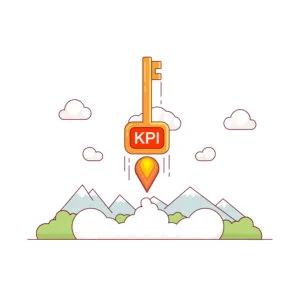
KPI stands for Key Performance Indicators. Simply put they measure performance. They demonstrate how effectively a business is reaching its targets. And to make this happen, KPIs must be linked to strategic business goals. KPIs help you get deeper insights and make informed decisions even when they are challenging.
When used accurately, KPIs become an important part of a long-term business strategy and daily management. Whether you are a B2C or a B2B, assessing the most important KPIs for your business helps people laser focus and separates your organization from the competition.
The KPIs a business tracks depend upon its particular industry. While some metrics will be important to an organization as a whole, each department should also track metrics specific to its own goals.
For example, an organization may measure cost and conversion rates. At the same time, their marketing evaluates landing page conversion rates and organic traffic. Similarly, its sales department may specifically track KPIs for sales like missed sales opportunities or trial accounts. Your KPI needs to reflect your own business.
Also, depending on how the indicator measures or what it predicts, they can be divided into several categories such as:
Quantitative indicators measure using numbers. They are continuous and discrete.
Qualitative indicators do not measure in numbers but are a characteristic of a business decision.
Input indicators evaluate the resources used during a business process.
Process indicators monitor the efficiency of a business process to facilitate the necessary decisions both positive and negative.
Output indicators measure the success or failure of a business process.
Financial indicators calculate an organization’s economic stability and its growth.
Many more types of indicators can be added to the list. There also are high-level KPIs that demonstrate an organization’s overall performance. And there are low-level KPIs that focus on narrow goals. Selecting the right KPIs is the key to success here.
The rule of ‘one-size-fits-all’ doesn’t apply when it comes to selecting the best key performance indicators for your business. They must be carefully selected. If not, performance measures can become demoralizing.
Plus, they will be a waste of everyone’s time, company money, and employee effort.
Thus, it is commonly said that your KPIs must not just be smart but smarter. Let’s answer the next question.
Here, SMART and SMARTER KPIs stand for:
The objective of tracking a particular KPI must be specific. You must have a clear picture in mind of your aim. A very distinct outcome or objective needs to be determined.
Once the objective is clear, your KPI must measure your progress towards that particular target. The data obtained from KPI monitoring tools must depict the measurement of even the tiniest of efforts towards your aim.
Make sure that your KPIs are attainable or tracking them will add no value to your business. If your goal is impossible to reach, it is just going to discourage the whole team. KPIs must not fail to affect positive changes.
Do not write a KPI just because your competitors are using the one or because it is an industry trend. Check whether they are relevant to your business goals.
Decide beforehand the time period you are going to track the KPI. Some measurements can apply to a product or specific campaign. Clearly define the time-frame whether it is a weekly, monthly or a yearly target.
Your team must understand what the KPI means and what they are supposed to do with it. The tracked data information may sound interesting but it must lead to an improved decision as well. Remember, a KPI is only as valuable as the action it inspires.
Certain KPIs tend to expire after your business grows or changes. Before investing in tools or dashboards to manage KPIs, make sure they are applicable to your strategies and campaigns.
The answers to our next questions depend a lot on your understanding of smarter KPIs.
When writing or developing a KPI, you need to scrutinize how they relate to a specific business outcome. KPIs need to be customized to your business situation. As mentioned above, ‘one-size-fits-all’ does not work with key performance management.
In short, when writing, creating or developing a key performance indicator you will want to:
Again, if you are following the ‘SMARTER KPI’ concept, you are following KPI best practices. Cross-check your KPI related decisions because measuring and monitoring business performance is critical. However, focusing on the wrong key performance indicators can have long-lasting, adverse effects on your business.
So always certify that your KPIs are not only SMARTER but also meet the four A’s — Aligned, Acute, Accurate and Alive!
Let’s move to the next critical question.
Another question which occurs related to KPIs is how to measure a KPI? The point to remember here is that each benchmark has its own set of measurements that must be met. Everyone needs to know how an accomplishment or a failure is defined.
Many times you’ll realize that there are different methods to measure the progress of a KPI depending on the type of KPI you are tracking. For example, you could measure sales based on the number of products sold or based on the cost. How you calculate a KPI totally depends on the key performance areas and monitoring tools.
Picture this…
The human body is a combination of many systems like the digestive system, the nervous system, the respiratory system, the muscular system, etc. These systems operate simultaneously and are coordinated by the brain through various instructions. For the brain to operate smoothly, it needs to be constantly aware of every little activity in our body.
Similarly, in a business, several departments operate simultaneously and are influenced by both minor and major changes or activities. For a business owner to run his business smoothly, it is necessary that he gets all the necessary updates. This is exactly what a KPI dashboard does.
A KPI dashboard collects, groups, organizes and visualizes the organization’s important metrics. It provides a quick overview of business performance and expected growth. (Source)
The best KPI dashboards not only track key performance areas but also provide a detailed and customized synopsis of your organization’s current state and overall success rate.
Reporting and analysis are an inseparable part of any business today. If you are an agency, your clients want to see what you’re doing with their money. In the fast-moving competitive world, one cannot invest hours in preparing a crude excel dashboard by gathering data from different sources. One needs to automate the time-consuming work. Setting up your KPI dashboards is the best solution available now.
KPI dashboards help business leaders and project managers make decisions based on actual data and not just a gut feeling. Unlocking advantageous insights from tracked data has never been an easy job. What makes it worse is the absence of an actionable format for the information.
KPI dashboards can help you easily overcome these obstacles. In fact, Convirza’s Call Reporting dashboard is completely customizable. It clearly guides customers to predict better results with trend analysis, visualize data to discover insights and turn dashboard information into actions.
Every business has its own favorite metrics. With Convirza, you can see your KPI development data when and where you want it.
With 40% faster load time for reports, following are the key features of Convirza’s Call Reporting Dashboard:
KPIs or key performance indicators are an integral part of business strategies. Smart business owners never ignore their SMARTER KPIs. They not only provide insights but also help you invest your time, money and efforts in the right place.
Developing goal-specific KPIs and tracking them can be like drive-time traffic. Or it can be as easy as setting cruise control on your have the right tools. Get a Call Reporting demo today!

Book A Quick 15 Minute Call,
And We’ll Show You How To Unlock The Power Of Every Conversation.


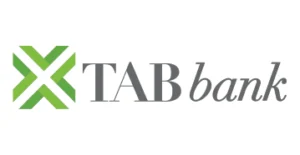




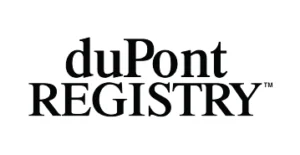
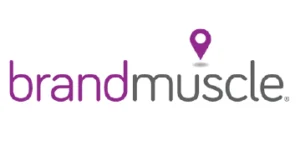
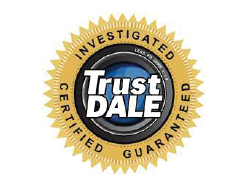


















©2024 All rights reserved – Convirza